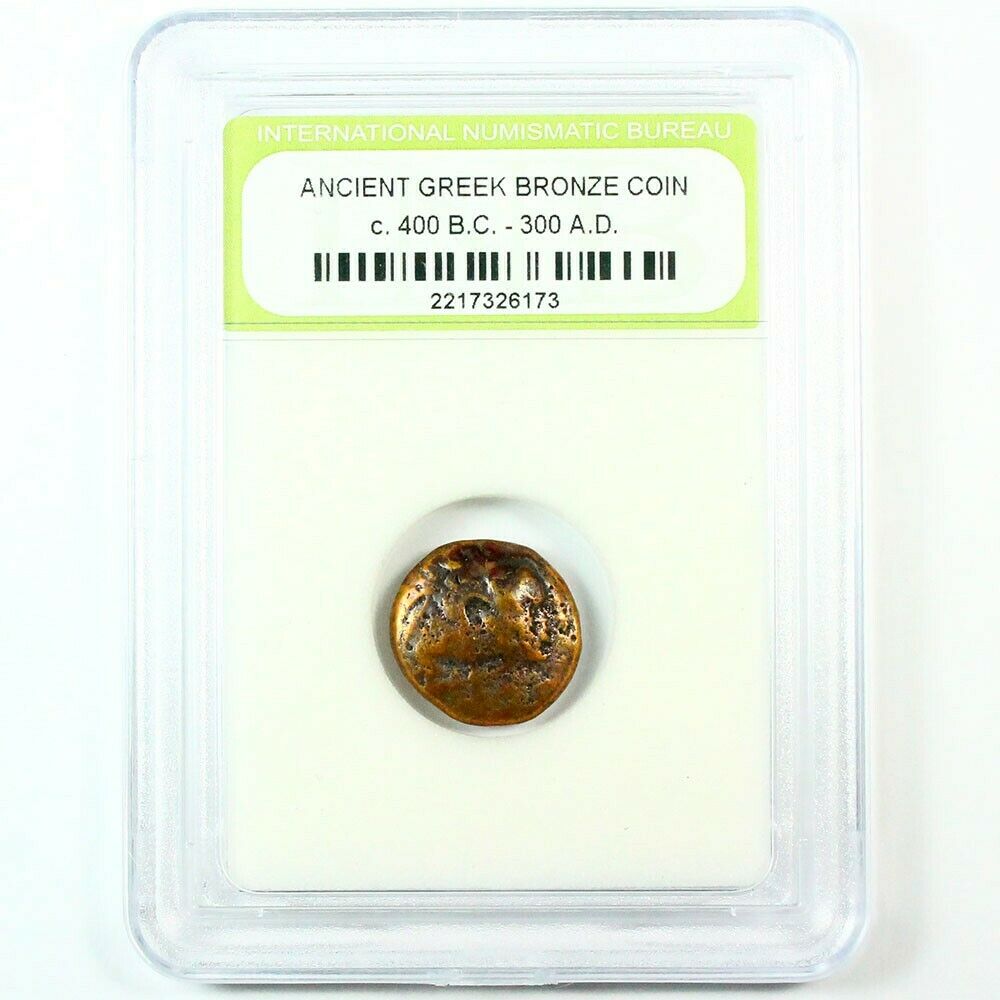-40%
Phoenicia, Tyre. 126/5 BC-AD 65/6. AR Shekel (24mm, 14.2g). Interior die break.
$ 884.4
- Description
- Size Guide
Description
PHOENICIA,Tyre
. 126/5 BC-AD 65/6. AR Shekel (24mm, 14.2g).
Dated Civic year 162
(
A.D. 36/37
).
Obverse:
Laureate head of
Melkart
right
Reverse:
Eagle standing left on prow to left; palm frond right, in background.
Interior die break behind eagle.
PΞB
(date) above club in left field; KP above monogram in right field; Phoenician letter Aleph between legs.
After Demetrius was murdered, the city Tyre became independent and started to mint autonomous shekels in a style, size and weight (c. 14 gram) very comparable to the earlier tetradrachms. The head of the ruler was replaced by the laureate head of the city god Melqart facing right, continuing the beautiful style. Like the former tetradrachms, there was no obverse legend. The reverse again showed an eagle standing left on a ship ram, symbol for the harbour city Tyre. Also the club at the left side of the eagle was continued. The date shifted from the right side of the eagle to the top of the club, and new year counting started with this first moment of independence. The name of the ruler in the reverse legend was replaced by a general text TYPOY IEPAS KAI ASULOY (of Tyre the holy and inviolable). Also half shekels were minted with the same obverse and reverse, and in some rare occasions quarter shekels were minted as well. The style was beautiful, although minting errors like double strikes occurred.
After a few years, the style of the Tyrian shekels deteriorated with a more crude portrait. A brief revival in style followed, after which the coins become more crude again. In the last stage,
from 18 BCE onwards, a very crude series was minted, partly with very worn dies.
It has been suggested by Meshorer these coins have been minted in Jerusalem, but this suggestion is not generally supported. Marian and Sermarini remarked in their analysis of the Temple tax Hoard, that obverse dies of these crude coins in many cases were much better and close to the style of the contemporary coins of Tyre. They suggested the crude reverse style was related to periods of high production, knowing reverse dies on average lasted much shorter then obverse dies and apparently were cut in great haste.
Donald Ariel, Head of the Coin Department at Israel Antiquities Authority
, said that the theory late shekels were minted in Jerusalem came from Meshorer (as an aside, he said Meshorer was one of his teachers). He indicates that
all evidence that these coins were minted in Jerusalem contradicts Meshorer, and the idea is rejected in the academic community.


















